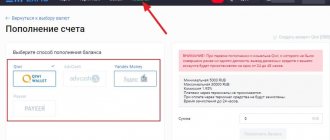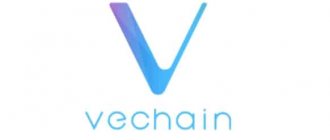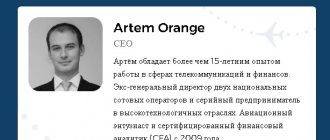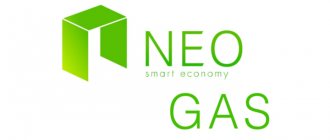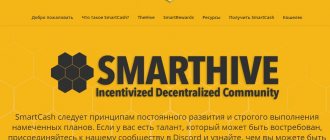Elastos cryptocurrency (ELA) is a project aimed at creating a decentralized platform that effectively solves the problems of the “smart” economy. The developers have set themselves a fairly ambitious goal. To achieve this, it was decided to use a secure platform operating through a peer-to-peer network.
Official website (elastos website): https://www.elastos.org/
Elastos aims to become a platform for peer-to-peer decentralized applications (DApps) that operate without the need for a third party. Users will be able to access DApps through their mobile phones, regardless of their operating system. The idea is to provide a completely secure internet environment where DApps are not connected to the internet but are fully scalable to millions of users. This will enable wealth generation through the ownership and sharing of data and digital assets.
Objectives of the Elastos project
The developers intend to create an alternative version of the Internet based on blockchain. Online users will have the opportunity to own electronic assets and earn money from them. Currently, a huge amount of audio and video materials are posted on the Internet. However, the user who created the content does not always have real ownership rights to it.
Elastos' mission is to make electronic assets identifiable. This makes it possible to register ownership rights to them with subsequent sale. Developers are seeking to create a new version of the “global web” that respects the ownership of electronic content.
This approach will allow users to watch movies, play computer games and read books without intermediaries. Elastos cryptocurrency will allow content creators to know exactly how many users have viewed it.
The project should become an effective platform for DApps. It will be implemented as a peer-to-peer network. It is also planned to implement access to the platform from various mobile gadgets. In the Elastos ecosystem, the role of local currency will be played by its own ELA token.
Overview of the main goals of Elastos
The authors of the project strive to create a new type of Internet on the blockchain. In it, people will be able to own digital assets and receive income from it. Today there is a huge amount of audio, video and gaming content in the world. But people don't always truly own their digital property. Buying a digital book is much easier than selling it yourself.
Elastos' goal is to make digital assets identifiable and tradable with the ability to register ownership. The creators of Elastos intend to introduce a new version of the World Wide Web that will respect these rights.
This will allow users to access text content, movies and games directly without using a media player or other intermediary. The Elastos online store will allow video content creators to be aware of how many views their films have received.
Elastos will be a platform for decentralized applications (Dapps) in a peer-to-peer network format with the ability to access through mobile devices.
Elastos Web will be a special economic zone, where the ELA token will play the role of the base currency.
Main components of the system
The Elastos platform has a complex structure; its key elements are:
- SDK;
- runtime;
- Carrier;
- Blockchain and Smart Contract.
The first component from the list significantly expands the functionality of DApps. Its main purpose is related to electronic trust signatures, as well as authentication, and other tools used in the blockchain.
Elastos Runtime is a component that forms the eco-environment for DApps. It functions on top of the client gadget. The component allows developers to create DApps that have electronic broadcasting. The platform’s virtual machine controls the blocks that present electronic content to users for investment and consumption purposes.
Elastos Carrier is a peer-to-peer decentralized network that plays a critical role in the system structure. The key purpose of the component is to use and develop DApps.
Blockchain and Smart Contract is a structure that establishes trust in the security level of the platform. The main blockchain aims to distribute computing power among Bitcoin miners based on the PoW mechanism.
The platform provides for an expansion of the list of services for third-party DApps through the formation of blockchain side chains, as well as an increase in computing capabilities through the use of cluster services. This approach will make it possible to make the main chain of blocks safe from serious loads associated with complex calculations. The platform also provides support for smart contracts on secondary chains. As a result, the system will become as flexible as possible.
The authors of the project are confident that the Ethereum-based blockchain is better than others for working with smart contracts, but is ineffective for launching DApps. Because block chains do not have the ability to change the speed of their work and are not designed to store significant amounts of data. The platform developers have found a solution to these problems. The data will be stored in side chains. A separate service has been created to run DApps - Elastos Runtime.
Elastos platform
Elastos is being developed as an operating system based on blockchain technology and using the existing Internet as the underlying infrastructure. As part of this project, it is planned to combine the functionality of various blockchains, starting with Bitcoin and gradually expanding the base through integration with other platforms.
In the long term, with the help of Elastos, it is planned to create a global economic zone, transferring the main issues of interaction on the Internet into the digital sphere. To achieve the objectives, the following aspects are being developed:
- own main blockchain and auxiliary blockchains;
- tools for developing and using decentralized applications;
- infrastructure for using created applications and smart contracts;
- SDK modules focused on digital rights management, asset tokenization and access rights configuration.
The development of these components is based on the combination of original ideas with existing technologies. For example, it is planned to use the computing power of Bitcoin for mining Elastos. Every user who mines BTC will also receive ELA.
In addition to the use of the Bitcoin blockchain, other blockchains are expected to be included in the network. This will allow you to use their resources and functionality without loading the main network, which will ensure that bandwidth is maintained regardless of expansion.
The remaining three aspects are focused on the formation of the core functionality in Elastos. Creating applications, tokenizing their use, sharing and viewing content - all this makes the platform attractive to users of various groups.
Taking into account the formation of a new Internet, developers are paying attention to security issues. To achieve this, Elastos functionality limits automated application access to the Internet, focusing on preventing DDoS attacks and protecting against the spread of viruses.
Despite such restrictions, ownership rights will be maintained. Regardless of the operating network and Internet access, the content posted on the platform will be used under the conditions set by its copyright holders.
The technology behind Elastos
Elastos technology consists of a scalable architecture that includes a main chain and side chains. Every DApp has its own sidechain.
Side chains
One of the problems with blockchain technology is its weak computing power compared to a traditional computer. As a result, it cannot meet the requirements needed for applications such as video games or streaming high-definition movies. To improve scaling, the Elastos team uses sidechains.
The Elastos main chain is responsible for trading and transferring ELA and is restricted in other transactions to avoid loading the main chain with unnecessary smart contracts. Other transactions must be performed on sidechains: ID generation, token distribution, digital asset trading, and fast payment systems.
Tokens can also be placed on side chains and participate in two-way asset transfers across the main and side chains. Merged mining will help reduce energy costs and reduce environmental pollution.
Smart Web
The original design of the Elastos architecture was based on the idea that applications and services that cannot directly access the Internet needed a platform. This will solve problems with malware, theft of user data, or attacks on other services on the Internet.
In addition, the Elastos cryptocurrency has many other features. Its public chain is user-friendly and simple and cannot be viewed by third-party apps and services. To prevent the main circuit from being overloaded, it has several predefined side circuits built into the Elastos Carrier platform.
The ability to issue tokens for digital assets or applications and an identified owner of digital content is available through smart contracts. Elastos smart contracts, as well as DApps, run on the Elastos Smart Web, creating a closed platform so that users do not have to constantly move in and out of the blockchain. It is this closed platform that creates an economic zone of security and an atmosphere conducive to wealth creation.
Elastos Blockchain
Its goal is to create a decentralized Smart Web where every device, individual user, website and digital asset is linked to a trusted identity. Blockchain will be the technology used to establish this trust on the internet. On the Elastos blockchain, each application can create individual and customizable sidechains.
Elastos Runtime
Elastos Runtime is a lightweight operating system that prevents applications and services from directly accessing the Internet. It runs on the client's mobile device or PC and is available for Android, iOS and Ubuntu Linux.
Elastos Carrier
It is a completely decentralized peer-to-peer platform. It takes care of all network traffic between virtual machines, transferring information on behalf of applications. Nodes, in any environment connected to the Internet, establish connections with each other using the User Datagram Protocol, a network address translator (UDP-based NAT).
Native Application Development Kit (SDK)
The SDK is required for applications to access their Elastos Carrier identifiers and services on the Smart Web.
Elastos converter
You can buy Elastos cryptocurrency (ELA) profitably on the following exchanges:
Huobi ( you can buy ELA here for ETH, BTC or USDT ); You can buy Bitcoin or Ether profitably here . More details here.
Elastos is a project whose main task is to upgrade the existing Internet network. The developers of the platform consider the main disadvantage of the World Wide Web to be the lack of ability to fully manipulate their belongings within this very network. So, the developers led by Chen Rong decided to fix this problem 18 years ago, in 2000.
The implementation of the idea is based on the identification and accounting of each individual thing within the Internet, that is, on the partial materialization of all products within the network. The idea is very ambitious, but given the development time of this platform and the fact that it entered the market only at the beginning of this year, we can assume that it is quite feasible.
The Elastos platform consists of 4 parts: Elastos Blockchain, Elastos Runtime, Elastos Carrier and Elastos Software Development Kit.
Elastos Blockchain is actually the basis of the entire platform, given that at the moment it is still considered a blockchain project. The developers decided to implement a very complex mechanics of their blockchain, namely merged mining.
For those who don’t know what it is, we’ll tell you in a nutshell. Combined mining is the simultaneous mining of several (in this case two) completely different cryptocurrencies. This mechanic is used mainly to protect new networks from a 51% attack. In this case, the new network, which is called the child blockchain, closes its blocks with the help of an already established network, which is called the parent blockchain. This mechanic is only possible if both cryptocurrencies have the same encryption algorithm.
Now let's transfer all this to the Elastos plane. The platform, acting as a child blockchain, uses the Bitcoin blockchain as its parent. Network transactions are collected into separate blocks, like other blockchains, but then this block is not sent for confirmation to miners, it is sent to a block of the Bitcoin network, which, along with its own transactions, also confirms the child block. In addition, the Elastos network supports sidechain technology with the ability to create smart contracts. This will significantly reduce the load on the main network.
Elastos Carrier is a network functionality responsible for creating and operating decentralized applications.
Elastos Runtime is the platform operating system that is required for applications to function.
Well, the Elastos Software Development Kit is functionality for application developers.
Simply put, Elastos is a new internet ecosystem that aims to monetize internet products. ELA platform tokens serve as the internal currency of the new ecosystem.
Elastos token
The Elastos Token, or ELA, is the native token for the Elastos blockchain. A total of 33 million ELAs will be issued, and the number of ELAs in circulation will increase annually at a fixed rate of 4%.
The distribution of tokens is as follows:
- DApps will use ELA for services such as domain name registration, search engines, and page ranking.
- Users will use ELA to purchase DApps, cloud storage, and many other resources.
Where can I buy ELA?
LBank is the primary option for purchasing ELA and is also the exchange where it has the largest trading volume. The token is available for purchase in pairs with USDT, BTC and ETH.
ELA is also listed on the following exchanges:
- Huobi;
- Coin Egg;
- Kucoin;
- Bit-Z;
- BCEX.
| # | Exchange | Trading pair | Volume |
| 1 | LBank | ELA/ETH | $2 075 909 |
| 2 | CoinEgg | ELA/BTC | $977 784 |
| 3 | Huobi | ELA/USDT | $397 550 |
| 4 | KuCoin | ELA/BTC | $57 549 |
| 5 | Bit-Z | ELA/BTC | $18 408 |
Development Elastos (ELA)
Elastos are co-founded by Rong Chen and Feng Han.
ICO DLA Elastos: from January 2 to January 23, 2020.
The token price was: 18.09 USD Current price is available here.
6% of the maximum number of tokens was available for purchase.
Work on the Elastos began in 2000, and the current version, based on blockchain technology, has been actively developed by the Elastos Foundation since June 2017.
The Elastos ecosystem is a network operating system using blockchain technology. Here the option of separating data processing tasks such as commissioning was used. Dapps and the study of network activities, that is, the transfer of value or data.
See also: Lisk (LSK) - Unlocking the Potential of Sidechain Technology in Decentralized Applications
Merged mining
The main idea of merged mining is that two different cryptocurrencies based on the same algorithm can be mined at the same time. In the case of Elastos, the Bitcoin blockchain is its parent blockchain.
ELA is mined every two minutes during Bitcoin pool mining. New coins are distributed as follows: 30% for the Elastos Foundation and 70% for miners.
Elastos cryptocurrency: future prospects
Elastos is developing a valuable alternative for artists and content creators to share their content, maintain full control over it, and maximize its monetization opportunities. This is not the first blockchain company seeking to develop a new kind of internet. For example, there are projects such as Substratum, which wants to decentralize the Internet, or Po.et, which wants to use blockchain to protect IP.
However, Elastos has managed to differentiate itself by developing Elastos Smart Web, which allows content to be shared between users in a closed environment not connected to the internet.
Online digital content is very saturated and usually has a very short shelf life. While it is nearly impossible for Elastos to prevent content leaks online, the platform seems to have done a great job of limiting information leaks.
Ultimately, any content creator who wants to find alternative ways to monetize and maintain control over their work should definitely consider Elastos as a platform for sharing current and future projects.
To help you finally decide how to approach this project, we have put together its main pros and cons.
Benefits of Elastos
- The system creates financial opportunities for both creators and consumers, thereby encouraging more people to use Elastos.
- Elastos can prevent content from being stolen and re-uploaded online where the original owner cannot monetize or track it. Their Runtime feature creates a closed environment for storing, viewing and monetizing digital content on the Elastos Smart Web.
- A very strong team and group of consultants from already successful blockchain companies (NEO, Bitmain).
Disadvantages of Elastos
- Elastos' closed environment cannot provide 100% protection against content leakage. Users can still capture screen content and post it online.
- Elastos also has no way to verify that a piece of content actually belongs to the uploader before it assigns its ID to it.
- There is no clear idea how to solve the problem when several users do not agree on who owns a song or video. The revenue distribution model for remixes is also not defined.
